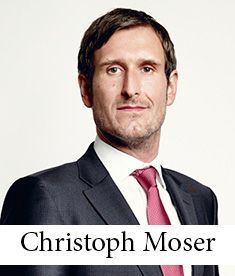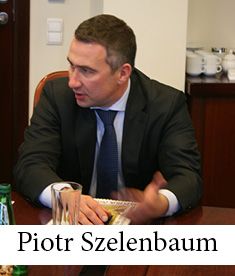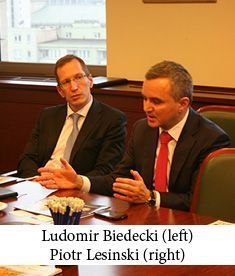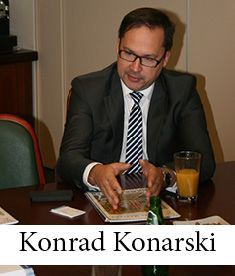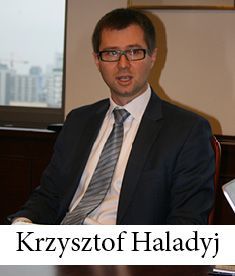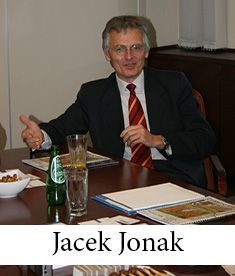Piotr Marucha is the Head of Legal and Integrity at ABB in Poland. His first in-house role was with Societe Generale (1997-1999) and his first General Counsel role was with Saint-Gobain (2000-2003). Prior to joining Societe Generale, Marucha worked for the Ministry of State Treasury, preceded by two years as a Junior Associate with Weil, Gotshal & Manges.
CEELM:
To start, please tell our readers a bit about your early-day career and how it shaped your choice in joining ABB.
P.M.: My professional education consists of a typical legal part before and at the beginning of my professional career and my business management adventure (Executive MBA studies at the University of Illinois at Urbana Champaign and Warsaw University). Before I graduated from the Law Faculty at the University of Warsaw, I had chosen to major in Contracts. As they say, old love cannot be forgotten. Drafting contracts and explaining legal terms, interpretations and negotiations to my colleagues from sales – those have been my strengths since I graduated.
In Poland, in order to become a licensed lawyer, belong to the Polish bar association, and be authorized to represent clients before all possible courts, including the Supreme Court, you need to complete a three-year apprenticeship organized by the Polish bar. During that period you get familiar with the daily business of courts of all kinds and levels, notary public offices and state administration. You have to learn the main jurisprudence and get acquainted with commentaries produced by the most famous academics and practicing lawyers. When you complete your legal apprenticeship and have some practice on the market, you may close the first chapter of your professional career and say: “Hey, why shouldn’t I try my own practice?” That’s exactly what I did. At that time, my portfolio included: a joint office of Weil, Gotshal & Manges and Nabarro Nathanson in Warsaw (Law Clerk and Junior Lawyer position), the Ministry of State Treasury (Lawyer), a Polish law firm (Lawyer), and Societe Generale Securities, a brokerage house (Lawyer & Compliance Officer). My experience at that time covered both sides of the legal services market: suppliers (law firms) and customers who purchase services from law offices.
Working for myself was not one of my dreams, however, I wanted to find out how it worked and how I felt about depending on myself in the market. Those who have worked on their own know very well that there are some tempting pros and significant cons of running your own business. I pursued this line of work for only one year. I was working like hell seven days a week and making very decent money, but running after potential customers all the time was not my dream. The adventure of being on my own was a missing item of a puzzle. I felt mature and experienced enough to make my career choice for life. I wanted to work as an in-house counsel and named my dream: a General Counsel position.
It took me a few months to take on this role at Saint-Gobain, in Warsaw. The company was established by Jean Baptiste Colbert for King Louis XIV as a glass manufacturing enterprise some three hundred and fifty years ago. In 2000, Saint-Gobain was one of the biggest French enterprises, had about thirty legal entities in Poland and most of the managers in the silver book of the top management stayed in the company for ten, fifteen, or even thirty years. I remember saying to myself: “Wow, what else do I need? I am going to follow a career of those guys listed in the silver book.” After almost four years of working for that prestigious giant I realized that I could do even better and develop my management skills faster in an even more international environment. That’s how I found ABB, the power & automation products and systems manufacturer.
CEELM:
One of your previous experiences that caught our attention was the two years you spent with the Ministry of the State Treasury. Can you describe your role during that period for us?
P.M.: That was a few years after Poland had done away with the centrally controlled economy and took the business development route. At the time, the first portion of state-owned enterprises had already been privatized. I joined the Ministry as one of two lawyers in the National Investment Funds Department. The job was extremely exciting and involved not only privatization issues, but also the law of capital markets. I spent those two years working for the government on the preparation of a legal framework for setting up the National Investment Funds (joint-stock companies), the launch and conversion of public share certificates into the shares of the National Investment Funds, and introducing those to the Warsaw Stock Exchange.
From these times I also remember publishing a book on the National Investment Funds Program together with my two colleagues working in the Ministry. Working for the government was quite unusual for me. Most of the people from the Ministry were professionals with the work habits dating back to the old Communist times. When the director of the NIF department asked me how much time I needed to complete my first task, my reply was: two weeks. The task was the following: drafting some by-laws on a share offer for farmers and fishermen. The original timeline I planned for was one week to draft the by-laws and another one for getting all possible approvals within the Ministry. It turned out that the second part of the task took six months, and that was nothing extraordinary in that place. That is how a young ambitious lawyer with two years’ experience in international law firms saw the reality of working for the government.
CEELM:
Your current title with ABB reads “General Counsel and Proxy.” What does the latter part of that entail in terms of responsibilities?
P.M.: Under the Polish Civil Code, a proxy is authorized to represent a company and sign most documents, except for the sale of enterprise and real estate. The proxy is appointed by a resolution of the management board. In practice, this position works in a similar way as a commercial representative holding an ordinary power of attorney. The proxy is not responsible for running the company and making decisions, unlike the board members. In ABB in Poland, we have three proxies appointed in order to ensure smooth business operation of the company in case there are not enough board members available to sign documents (in ABB we always apply the two signatures rule). On top of that, I treat this responsibility as a sign of prestige since I am not a member of the formal board.
CEELM:
You’ve been with ABB for over 11 years. What still gets you excited about your job after so many years?
P.M.: Believe it or not, I have never been bored during those years in ABB. We have everything here: contract negotiations, M&A, anti-trust, compliance (in ABB it is called “Integrity”), divestments, due diligence, corporate issues, intellectual property law, labor issues, public procurement…
In addition, ABB is a truly international group, best in class in the development of ethical standards, very innovative (with several research centers, including one in Krakow), and offering state-of-the-art products, systems, and solutions.
On top of that, the ABB culture is truly international. When I was involved in an M&A project and a negotiation team was coming to Warsaw from the headquarters in Zurich, I expected to meet three Swiss lawyers. Those “Swiss” guys turned out to be French, Swedish, and Indian. Another example: an internal audit team from Zurich consisted of a German person, a Kazakh, a Swede, a Pole, and a person from Switzerland. In ABB Poland we have some twenty expats as well, and new ones are still coming over. I do enjoy such an international environment.
Notably, there are many other opportunities in ABB, also for lawyers. You can move to a business unit and become a manager responsible for P&L, you can run all kinds of different projects (not only of a legal nature), or work for ABB in another country. In ABB, you never know what you will do in the next year and that is exciting. For instance, a few years ago, I received an offer to work in a legal department in Beijing as a Deputy Head. At that time, my wife was about to give birth to our son and I did not even consider going so far away. However, I may relocate one of these days.
CEELM:
You only spent two years in private practice early in your career as a junior associate. Do you ever consider moving back to the law firm world? Why/why not?
P.M.: I made my choice some fifteen years ago and still enjoy being an in-house counsel, managing the legal risk of a company. After finishing my Executive MBA studies and gaining some managerial experience I understand how a company works and how to run a business. Thus, I think that it would be possible for me to join a law firm sometime in the future, but as a managing partner rather than a legal counsel. I think that someone who has so many years of in-house experience in several international companies understands the needs and expectations of business customers much better than a lawyer who has always been working in a law firm.
CEELM:
There is a great deal of emphasis in the last few years on GCs acting as more than just risk-aversion tools within their organizations. Being a “strategic business partner” seems to be the new expected norm. What do you feel a GC needs to learn and do to achieve this?
P.M.: I consider the transformation of a red-light advisor approach into a legitimate and respected business partner as the biggest behavioral challenge of a GC. Today, business people require GCs not only to know and understand customers, market, products, and legal risks, but also to be active players at every stage of contract formation and performance. There are a few reasons behind that approach. During the last few years we have faced economic slowdowns coming one after another, and companies simply cannot afford to lose money. Thus, they focus on limiting all possible risks in between pure legal advice and salesmen capabilities (e.g., there are situations when everyone in a company does his/her job, but something goes wrong anyway).
Also, GCs are expected to make decisions and take responsibility for business projects. Indeed, the modern GC becomes a strategic business partner and sometimes even “go/no-go” decisions are entrusted to him/her. GCs must differentiate themselves from law firms that usually serve as pure risk advisors. I know and talk to a great number of GCs in Poland, because I am a co-founder and board member of the Polish Company Lawyers Association, set up five years ago. I can say that Polish GCs understand market expectations quite well. They learn management (e.g. by taking MBA studies) and develop soft skills (communication, people development, etc.). Nowadays, a GC who is a business partner seems a must for the modern and growing business environment.
CEELM:
From a regulatory stand point, what are the main regulatory/legislative recent or upcoming updates that keep you up at night?
P.M.: There are two areas of law that bother me a lot, and both of them may trigger a significant risk to the business. One is the public procurement law that changes a few times per year, and some fundamental changes are expected in the near future as well. You have to be alert to keep up with all those changes and interpretations and make sure that salespeople are aware of all latest amendments, because a big portion of ABB’s customers comes from the public sector.
Another piece of “nice” legislation is the anti-trust law. The last and biggest amendments will come into force on January 18, 2015. The hottest issue is the responsibility of natural persons for breaching of anti-trust law. Another interesting amendment of that law is a leniency process offered to natural persons (board members and managers). In practice, it may create very complex business situations, huge conflicts of interests, and a total mess jeopardizing a board member’s reputation when he/she considers filing a leniency application and hires his/her personal legal advisor – all while still working for the company that he/she plans to betray.
I just wonder how this will work. My assumption is that there will not be many cases of leniency in Poland applying to natural persons.
CEELM:
On the lighter side, if you were not a lawyer, what profession would you imagine yourself having?
P.M.: A business advisor. During my EMBA studies I discovered my great interest in and enthusiasm for creating start-ups and introducing new and modern undertakings to the market (e.g., leading them to a stock exchange or some other regulated market). What really attracts me in it is making a vision for business development, changing business dreams into strategies, and checking out how they meet the financial expectations.
If there are no groundbreaking changes coming, a well-prepared business plan based on profound market research should work. In the case of a difficult and fast-developing market, making business plans is nowadays nothing other than crystal-ball gazing. That is both exciting and challenging, since there is definitely more risk to be taken in the market than in court.
This Article was originally published in Issue 6 of the CEE Legal Matters Magazine. If you would like to receive a hard copy of the magazine, you can subscribe here.

